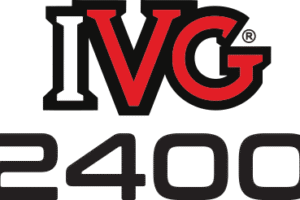Introduction
In today’s rapidly evolving business environment, flexibility and speed are crucial for successful technology implementations. Microsoft Dynamics 365 implementation projects, known for their complexity and scale, demand methodologies that allow adaptability and continuous improvement. Agile methodology, originally developed for software development, has become increasingly popular in the realm of enterprise resource planning (ERP) and customer relationship management (CRM) implementations such as Dynamics 365. This article explores how Agile methodology impacts microsoft dynamics 365 partner projects, highlighting its key benefits and limitations.
Understanding Agile Methodology in the Context of Dynamics 365 Implementation
Agile methodology is an iterative approach to project management and software development that emphasizes collaboration, customer feedback, and small, incremental improvements. Unlike traditional waterfall models, which follow a linear and sequential process, Agile breaks projects into smaller cycles called sprints or iterations. This enables teams to deliver functional pieces of the software regularly, respond quickly to changing requirements, and incorporate stakeholder feedback throughout the project lifecycle.
When applied to Microsoft Dynamics 365 implementation, Agile supports a flexible approach to deploying modules, customizing features, and integrating systems. Dynamics 365, being a comprehensive suite combining CRM and ERP capabilities, often requires ongoing adjustments to fit specific business needs. Agile empowers implementation teams to embrace change rather than resist it, making it a strong candidate for such dynamic projects.
Benefits of Agile Methodology in Microsoft Dynamics 365 Implementation
Enhanced Flexibility and Adaptability
One of the most significant advantages of using Agile in Microsoft Dynamics 365 implementation is the ability to adapt quickly to evolving business requirements. Organizations often discover new needs or face changing market conditions during the implementation process. Agile’s iterative cycles allow the project team to reprioritize tasks and adjust deliverables, reducing the risk of delivering outdated or irrelevant solutions.
Improved Stakeholder Engagement and Collaboration
Agile promotes continuous collaboration between project teams, end-users, and stakeholders. Regular sprint reviews and feedback sessions ensure that users remain actively involved in the Microsoft Dynamics 365 implementation. This collaboration helps clarify expectations, reduces misunderstandings, and leads to a solution that better aligns with actual business processes and user needs.
Faster Time-to-Value
By delivering functional components incrementally, Agile allows businesses to start benefiting from Microsoft Dynamics 365 implementation sooner. Instead of waiting for a big-bang deployment where all features are launched simultaneously, users can access valuable capabilities early on. This approach not only accelerates the return on investment but also enables earlier identification and resolution of issues.
Continuous Improvement and Risk Mitigation
Agile’s focus on iterative progress encourages continuous testing and validation throughout the Dynamics 365 implementation. Frequent reviews help uncover defects, gaps, or misalignments early, reducing the chances of costly rework later. This incremental risk management approach leads to higher-quality outcomes and smoother deployments.
Enhanced Team Productivity and Morale
Breaking down the implementation into smaller tasks within sprints can increase focus and motivation among team members. Agile fosters a sense of ownership and accomplishment as teams deliver tangible results regularly. This can improve overall productivity and create a positive working environment during Microsoft Dynamics 365 implementation.
Limitations of Agile Methodology in Microsoft Dynamics 365 Implementation
Challenges with Scope Definition
While Agile embraces change, it can sometimes struggle with scope creep if project boundaries are not well defined. Microsoft Dynamics 365 implementation projects can be extensive, involving multiple modules and integrations. Without clear prioritization and scope management, there is a risk that iterative development might extend timelines and inflate costs.
Need for Strong Customer Involvement
Agile requires continuous involvement from business users and stakeholders to provide feedback and make decisions during each sprint. In Microsoft Dynamics 365 implementation, securing consistent availability of these key participants can be difficult due to their other commitments. Lack of active engagement can slow progress or result in misaligned deliverables.
Potential Difficulty in Managing Large Teams and Complex Integrations
Microsoft Dynamics 365 implementations often involve large, cross-functional teams including consultants, developers, and business analysts. Managing Agile practices at scale, especially with geographically dispersed teams, can be challenging. Additionally, complex integrations with legacy systems may require upfront planning that is not always compatible with Agile’s iterative approach.
Documentation and Compliance Concerns
Traditional ERP implementations sometimes emphasize extensive documentation and formal approvals to meet compliance requirements. Agile’s lighter documentation philosophy may pose risks in regulated industries or where audit trails are mandatory. Teams need to balance Agile flexibility with governance needs during Microsoft Dynamics 365 implementation.
Requires Experienced Agile Practitioners
Successfully applying Agile in Microsoft Dynamics 365 implementation demands skilled Scrum Masters, Product Owners, and team members familiar with Agile principles and Dynamics 365 technology. Without experienced leadership, the project may face confusion, poor sprint planning, and inconsistent deliverables, undermining the benefits of Agile.
Best Practices for Applying Agile in Microsoft Dynamics 365 Implementation Projects
To maximize the benefits and minimize the limitations of Agile methodology, organizations should consider the following best practices when implementing Microsoft Dynamics 365:
- Define Clear Priorities and a Minimum Viable Product (MVP): Start by identifying the core features that provide immediate business value. Use MVP to focus the initial sprints and prevent scope creep.
- Ensure Continuous Stakeholder Engagement: Involve key users and decision-makers from the start and schedule regular feedback sessions to maintain alignment.
- Leverage Agile Tools and Automation: Use project management tools like Azure DevOps or Jira to track sprints, backlogs, and tasks, enabling transparency and coordination.
- Provide Agile Training and Support: Equip teams with Agile training tailored to Dynamics 365 projects. Experienced Agile coaches can help guide the process.
- Adapt Agile Framework to Project Size: For large-scale Dynamics 365 implementations, consider scaling Agile frameworks such as SAFe (Scaled Agile Framework) or LeSS (Large Scale Scrum).
- Maintain Balanced Documentation: While Agile promotes minimal documentation, ensure that regulatory and compliance documentation requirements are met through lightweight but sufficient records.
- Integrate Continuous Testing: Implement automated testing tools to validate Dynamics 365 functionality early and often within each sprint.
Conclusion
Microsoft Dynamics 365 implementation projects are complex, involving multiple components and significant customization. Agile methodology provides a flexible, collaborative, and iterative approach that can significantly improve the success rate of these projects. By enhancing adaptability, stakeholder engagement, and time-to-value, Agile helps organizations realize the full potential of Dynamics 365.
However, Agile is not without its challenges. Managing scope, ensuring consistent customer involvement, handling large teams, and meeting documentation standards require careful planning and experienced practitioners. When these limitations are addressed, Agile can be a powerful methodology to navigate the complexities of Microsoft Dynamics 365 implementation and deliver a solution that truly meets business needs.
Organizations aiming to implement Microsoft Dynamics 365 should carefully assess their readiness for Agile and tailor the approach to their unique context. By doing so, they can unlock the benefits of Agile while mitigating potential risks, ensuring a successful transformation powered by Microsoft Dynamics 365.



